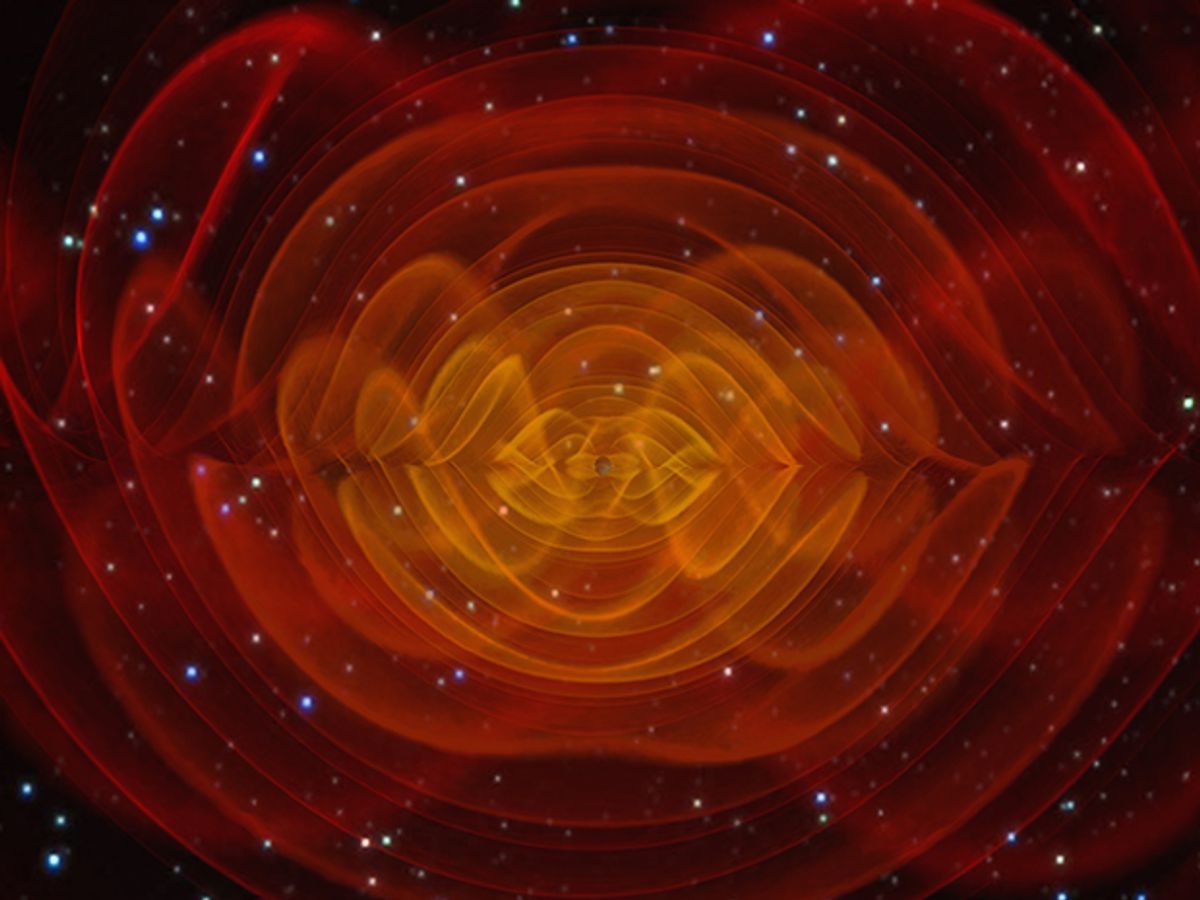Washington, D.C.—The wait is over. After months of rumors, the Laser Interferometer Gravitational-Wave Observatory (LIGO) today announced the first direct detection of a gravitational wave.
Standing before a packed room at National Press Club on Thursday, LIGO executive director David Reitze made a declaration that was decades in the making: “Ladies and gentlemen we have detected gravitational waves. We did it.”
The signal, which hit LIGO’s two detectors on 14 September before the observatory’s revamped detectors had even begun their science run, was created by two black holes that spiraled into one another and merged. Computational modeling suggests the two objects—29 and 36 times the mass of the sun—coalesced to create a black hole of 62 solar masses.

The difference between the sum of those two initial masses and the final black hole mass—some three times the mass of the sun—was released as energy in the form of gravitational waves. This “storm” in space-time, as physicist Kip Thorne called it, very briefly produced 50 times more power than all the stars in the universe put together. A portion of the wave traveled for 1.3 billion years before finally reaching Earth and the LIGO detectors.
LIGO, which consists of detectors in Livingston, Louisiana and Hanford, Washington, is an interferometer that is designed to detect strains in space-time, tiny changes in the length of 4-kilometer-long arms.
This signal, dubbed GW150914, shifted the relative length of those arms by a miniscule amount, a small fraction of the diameter of the proton. But it was dramatic in the detectors. Each showed the characteristic “chirp” of the merger of two massive objects, a slide-whistle-like signal of displacement that gets stronger and higher in frequency over time.
There is little doubt among the LIGO collaborators that this was a real gravitational wave. Based on their analysis, the team estimates this sort of signal could occur by chance in the detectors no more than once in about 200,000 years.
But what does that number actually mean? And how did they get it?
It comes from the team’s way of tackling noise. The extraordinary sensitivity of LIGO’s detectors and their position on the Earth means they are able to pick up a lot of vibrations, including passing trucks, earthquakes, and the crash of distant ocean waves.
“We have a bevy of instruments that measure environmental noise,” LIGO co-founder Rainer Weiss explained at the press conference. “Everything we could think of has an instrument that measures it.” The team scours that information, along with roughly 100,000 signals monitoring the detector itself, Weiss says, to account for sources of noise might mimic a signal.
A problematic vibration from outside the system will trigger a veto of the data around that time, so that the data won’t be used. But a lot of noise still remains—little “pings” happen many times a minute, Neil Cornish, a member of the LIGO collaboration based at Montana State University, told IEEE Spectrum.
There is no single attributable source for that noise, though Cornish says mechanical oscillations in the detector are often to blame. The problem with the noise is that it creates wiggles, and at some point, by chance, it could conceivably create a wiggle that looks just like a gravitational wave.
This constant but irregular noise can’t easily be modeled and subtracted out—instead the team members have to find another way to measure it while they hunt for signals. “The whole reason our searches are so expensive and take so long is [that] we have to estimate our background,” Cornish says.
The team does this with a lot of computational work: when a candidate signal is identified in both detectors, the data is time-shifted to see whether the agreement between the signals disappears with this shift (a gravitational wave should reach both LIGO detectors within milliseconds).
By shifting the data over and over again by different miniscule amounts of time, the team can measure the chance of randomly finding a bit of noise in one detector that matches what’s found in the other. The process is equivalent to simulating many years of detector operation: “With a few days worth of data, we can generate the equivalent of 100,000 years of observations just by shifting it,” Cornish says. “Every time we report a result in LIGO the computational cost is not in analyzing the data as it comes in. That’s easy. It’s the tens or hundreds of thousands of time shifts that we apply to every piece of data to do our calculations.”
The search is helped when you know what to look for. In the case of GW150914, the team ran two different kinds of searches, one which assumed nothing about the form of the signal, and the other of which applied templates to the data based on computational models of what a double black hole merger might look like. The 1-in-more-than-200,000 years result comes from this latter method.
It’s expected to be the first of many detections to come.
Rachel Courtland, an unabashed astronomy aficionado, is a former senior associate editor at Spectrum. She now works in the editorial department at Nature. At Spectrum, she wrote about a variety of engineering efforts, including the quest for energy-producing fusion at the National Ignition Facility and the hunt for dark matter using an ultraquiet radio receiver. In 2014, she received a Neal Award for her feature on shrinking transistors and how the semiconductor industry talks about the challenge.




